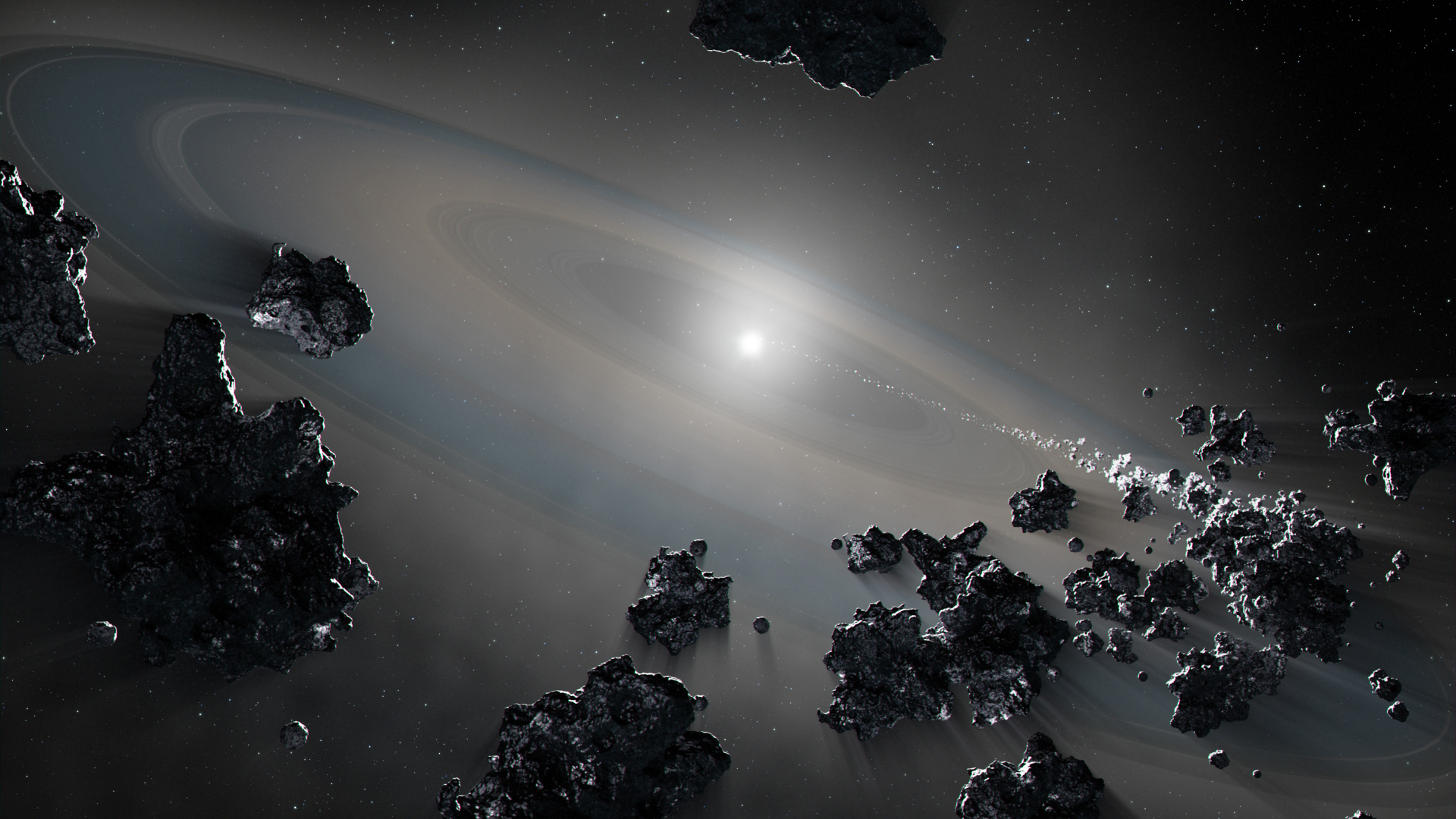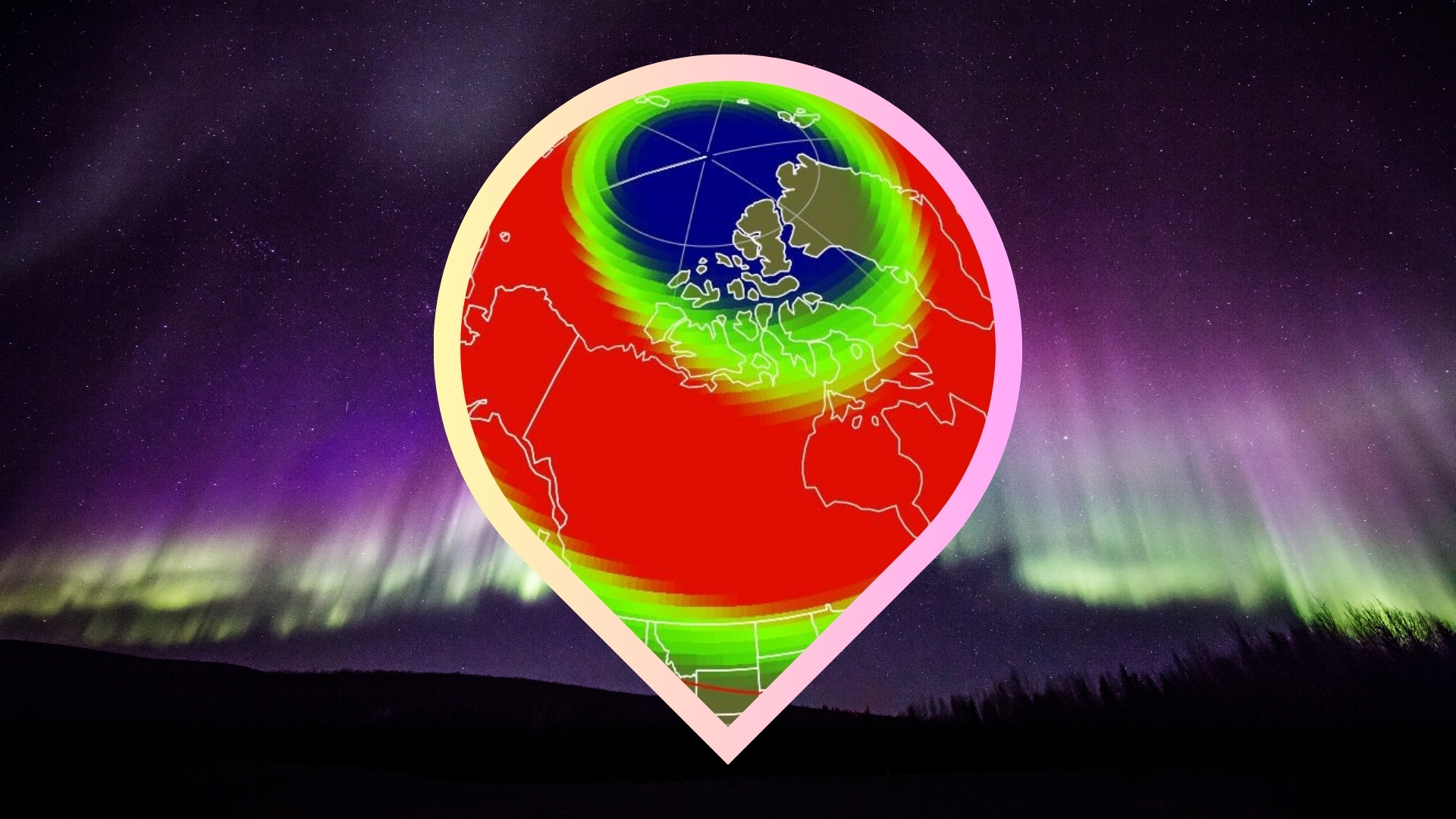A doomed planet is being torn up by its 'zombie' white dwarf star — but astronomers don't understand why
The findings could change how we view planetary systems in their afterlife.

A white dwarf star has been caught in the middle of consuming a planetary relic, offering fresh clues as to what happens to planetary systems after their star dies.
Three billion years ago, a sun-like star reached the end of its life, throwing off its outer layers following its red giant phase to leave behind its inert core, which we see today as the white dwarf called LSPM J0207+3331, located 145 light-years away. But what happened to its planets?
Spectroscopic observations of LSPM J0207+3331 by several telescopes, including the Magellan Baade 6.5-meter telescope in Chile and the 10-meter Keck I telescope on Hawaii's Mauna Kea, have revealed that fragments of planets and asteroids have survived for three billion years.
For one of those fragments, however, its time is at an end. The spectroscopic observations have shown that gravitational tidal forces from the white dwarf have torn it apart, scattering debris from the planetary body onto the surface of the white dwarf. The measurements identified 13 elements from this doomed object, including aluminum, carbon, chromium, cobalt, copper, iron, magnesium, manganese, nickel, silicon, sodium, strontium and titanium, in mostly Earth-like abundances.
The white dwarf features a hydrogen-rich envelope, and in general any elements deposited onto the white dwarf should sink into this hydrogen envelope and disappear from view. For so many elements to still be visible implies that their accretion onto the white dwarf must have happened relatively recently — within the past 35,000 years.
It could even be ongoing – LSPM J0207+3331 could still be dismantling this object, which is estimated to have been 120 miles (193 kilometers) across, a piece at a time as you read this.
Heavy elements from destroyed planets and asteroids have been detected on white dwarfs before, but after three billion years this process of debris falling onto the white dwarf should have ended.
Breaking space news, the latest updates on rocket launches, skywatching events and more!
"The amount of rocky material is unusually high for a white dwarf of this age," said Patrick Dufour of the Trottier Institute for Research on Exoplanets at Université de Montréal in a statement.
LSPM J0207+3331 is also ringed by a probable debris disk rich in silicates and which was discovered as an excess mid-infrared glow by NASA's Wide-field Infrared Survey Explorer (WISE). The hypothesis is that the object that has recently been ripped apart by the white dwarf could have originated from this debris disk of material that survived the death of the star. Future James Webb Space Telescope (JWST) observations of this disk could allow researchers to determine its mineralogy and constrain its total mass, which will provide further clues as to the nature of the object that the white dwarf has destroyed.
What is not yet clear is why has this object met its doom now, and not at any time in the previous three billion years?
"This discovery challenges our understanding of planetary system evolution," added Érika Le Bourdais, also of Montréal and the lead author of the research. "Ongoing accretion at this stage suggests white dwarfs may also retain planetary remnants still undergoing dynamical changes."
When a sun-like star begins to die and expands into a red giant, its inner planets are consumed and destroyed. However, bodies orbiting far enough away, such as asteroids, comets and gas giant planets, can survive, after a fashion. The changing gravitational field as a star sheds mass can disrupt the planets' orbits, resulting in many collisions between asteroids, comets and surviving planets and moons over billions of years that can grind solid bodies down to dust and small chunks. It's this material that fills the debris disk around LSPM J0207+3331, and what is surprising is that substantial solid bodies still exist in that disk, and that something must have happened to cause one of those solid bodies to fall towards the white dwarf.
"Something clearly disturbed this system long after the star's death," said John Debes of the Space Telescope Science Institute. "There's still a reservoir of material capable of polluting the white dwarf, even after billions of years."
What has destabilized the debris is unclear. Any surviving gas giant planets could be responsible, with multi-planet interactions having possibly gradually destabilized orbits of smaller bodies over billions of years. "This could point to long-term dynamical processes we don’t yet fully understand," said Debes.
Proving this idea won't be easy, however.
Gas giant planets would be too far from the white dwarf and likely too cool to be bright enough to be imaged, although the JWST might be able to have a go. More likely, the European Space Agency's Gaia astrometric mission may have been able to detect a wobble in the motion of the white dwarf on the sky caused by the gravity of orbiting gas giant planets pulling on it. The first batch of exoplanet data from Gaia is expected to be released in December 2026 – perhaps then the mystery might be solved?
The findings have been published on Oct. 22 in The Astrophysical Journal.

Keith Cooper is a freelance science journalist and editor in the United Kingdom, and has a degree in physics and astrophysics from the University of Manchester. He's the author of "The Contact Paradox: Challenging Our Assumptions in the Search for Extraterrestrial Intelligence" (Bloomsbury Sigma, 2020) and has written articles on astronomy, space, physics and astrobiology for a multitude of magazines and websites.
You must confirm your public display name before commenting
Please logout and then login again, you will then be prompted to enter your display name.
